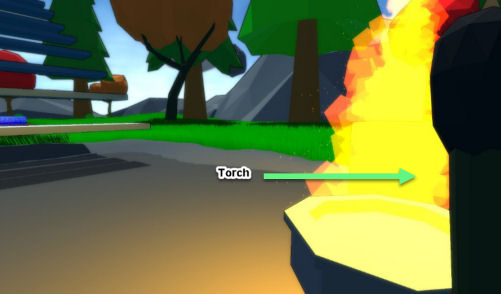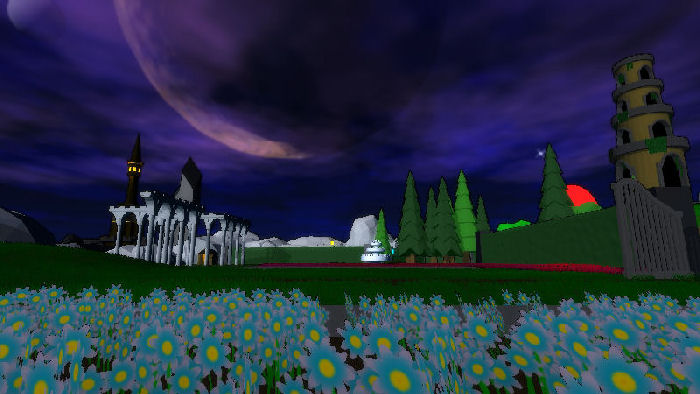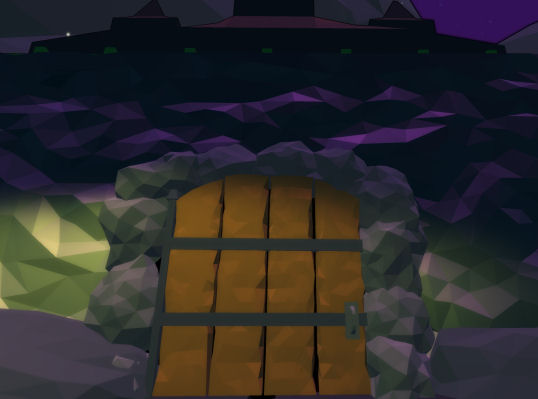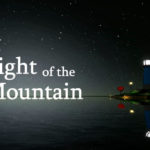Light of the Mountain Review
I would highly recommend Light of the Mountain to any adventurer who is willing to step out beyond point-and-click. It is a joy to run and jump your way through this surreal landscape of sights and sounds







SongHouse Games is an indie team made up of Brian Henken and Dylan McConey. Based in Orlando, Florida, they dodged Hurricane Irma in September and still delivered their first game, Light of the Mountain. They describe the game as a “puzzle-solving adventure” and have sought to make it “as compelling an experience as possible.” With art and music by Brian and programming by Dylan, the game comes together in an extraordinary way.

Light of the Mountain begins with the main character, Isaac, receiving news that he has terminal brain cancer. He sets sail and arrives on a fantastic island. Isaac then embarks on a journey of discovery, always moving towards The Light on the mountain. The game is about exploration on two levels – traversing the island to learn its secrets and Isaac’s personal trek through his feelings at the end of his life..
When I first started playing Light of the Mountain, I was immediately captivated by the surreal graphics, bright colors, and the strong soundtrack. The visuals are stunningly gorgeous and the music is lovely. I admit that I did not fully follow the story, which seemed intermittent and more stream-of-consciousness than narrative. However, there are some profound moments during which thoughts are shared on life’s purpose, our priorities, and who we are.
The island is a huge space that is open for exploration. As my wanderings began, I found several tools (a torch, a flashlight, and a grappling gun) that are prerequisites for moving forward. I also found notes from a prior visitor with cryptic clues that are important later in the game. With tools in hand, I began a lengthy journey through an amazingly diverse landscape.
Light of the Mountain was built with the Unity Engine and uses the standard WASD keys and mouse for movement and navigation. You can run, jump, and interact with specific objects in the environment. Your tools are accessed using the keyboard and controlled by clicks. Over time, you discover the power of these tools and how/when to use them. You collect a few inventory items (such as keys) and they are automatically used when needed.

This is a game of constant motion. You are walking, running, leaping, and grappling your way up towers, across floating platforms, and through mysterious portals. You travel on the ground and through the air. Natural gravity is not fully enforced on this island. You can climb up almost sheer rock faces and jumping is akin flying. With the proper moves, you can leap across huge chasms and traverse sequential platforms that, at first glance, seem impossibly far apart. You can also step off an edge and travel downwards an amazing distance without dying. Of course, you can also miss a jump and end up off the map. Respawning to try again was a feature that I became very familiar with as I honed my less-than-stellar platforming skills!
I struggled a bit with two aspects of the game. When lighting a flame, you must be in a perfect position (relative to what you are lighting) for success. In timed sequences, this is tricky because you have 2-3 seconds to light your own torch, run to your target, position yourself correctly, and ignite the target. Failing to do this in the allotted time means your own torch burns out. I lost track of how many times I ran the torch gauntlet in one specific area of the game. There are also “updraft” cubes that blow you skywards to a specific landing point. If you are not positioned correctly when entering the “updraft,” you will miss the landing point completely. I often found myself landing WAY off course and having to trek back to retry.

When I first installed Light of the Mountain, it had an explicit save feature and a single save slot. The game also automatically saved after specific puzzle solutions and on exit. The “save on exit” is problematic as it doesn’t give you a chance to return to your last save point. This is changed with a patch which is a big improvement. It allowed me to save my progress during a difficult section and then return to that specific point rather than returning to a predefined respawn location. I would have liked to see a “Load” option on the main menu. In the absence of “Load,” I had to quit the game and restart to return to my last save point.
I should mention that I encountered one glitch while playing. As is the risk with many 3D environments, I got stuck between objects and could not extricate myself. At that time, the game was saving on exit, so my stuck point was saved with no way out. I sent an email to SongHouse on a Saturday morning asking for help. Within a couple of hours, I received a response that they had patched the game and eliminated the ‘save on exit.’ I was back in business! For me, finding an obscure bug in a new game is not a big deal. What is noteworthy is the obvious commitment of SongHouse to its players.

Light of the Mountain is a world of diverse and interesting puzzles. There are clues to interpret, pillars to ignite, obstacles to overcome, and patterns to match. Just figuring out where to go next and finding the right buttons to open pathways is a challenge that requires creativity and observation. Often, things are not as they appear. Solid platforms suddenly vaporize. Sections of floor drop away. Grappling between points requires finding the next target while falling. It can be frustrating, infuriating, and absolutely exhilarating when you succeed!Clues and inventory objects are generally located close to where they are needed. If one is paying close attention to the environment, puzzles are solvable and I only found myself asking for help at one point in the game. Again, kudos to SongHouse for a quick (and kind) response.
As pathways open and you move upwards towards The Light, the environments become more surreal and fantastic. It is a dreamscape of epic proportions with an ever-changing and multi-hued sky. Light of the Mountain is a long journey and gives the player a great return on investment. I spent about 17 hours in the game. My guess is that a player with better run/jump skills might finish in less time but it is still quite an adventure.
When I finally reached the apex of my travels and the game credits rolled, I was returned to the island without a “game over” exit. There was one door that I had never opened and one of the letters promised at the beginning that I had not located. So, I went off to explore further. I found the letter and there was every indication that, when taken together, the letters referenced the unopened door. I puzzled through and entered an additional “after-the-game” segment! How cool is that??

I would highly recommend Light of the Mountain for any adventurer who is willing to step out beyond point-and-click to experience a cornucopia of sights and sounds. Despite my fumbling with the platform elements, this game never frustrated me to the point of quitting. I loved the grappling gun and took great pleasure every time it zipped me up to a new location. Most of all, I enjoyed using my brain to work out logical solutions to obstacles and appreciate the level of detail that went into designing the puzzles. I think that SongHouse is off to a running start in the world of game development!
More information about the team can be found at its website.
|
+ Surreal landscape and awesome music make this a world worth exploring
+ Linear path with freedom to explore each area at your own pace
+ Diversity of logical puzzles that make sense
– Story elements are more stream-of-consciousness than narrative
– Loading a saved game from the main menu would have been a nice feature
– Gamers who can’t run and jump while playing may want to avoid this title
|
 |
System Requirements
Processor: 2.4 GHz Dual Core Processor


Leave a Reply